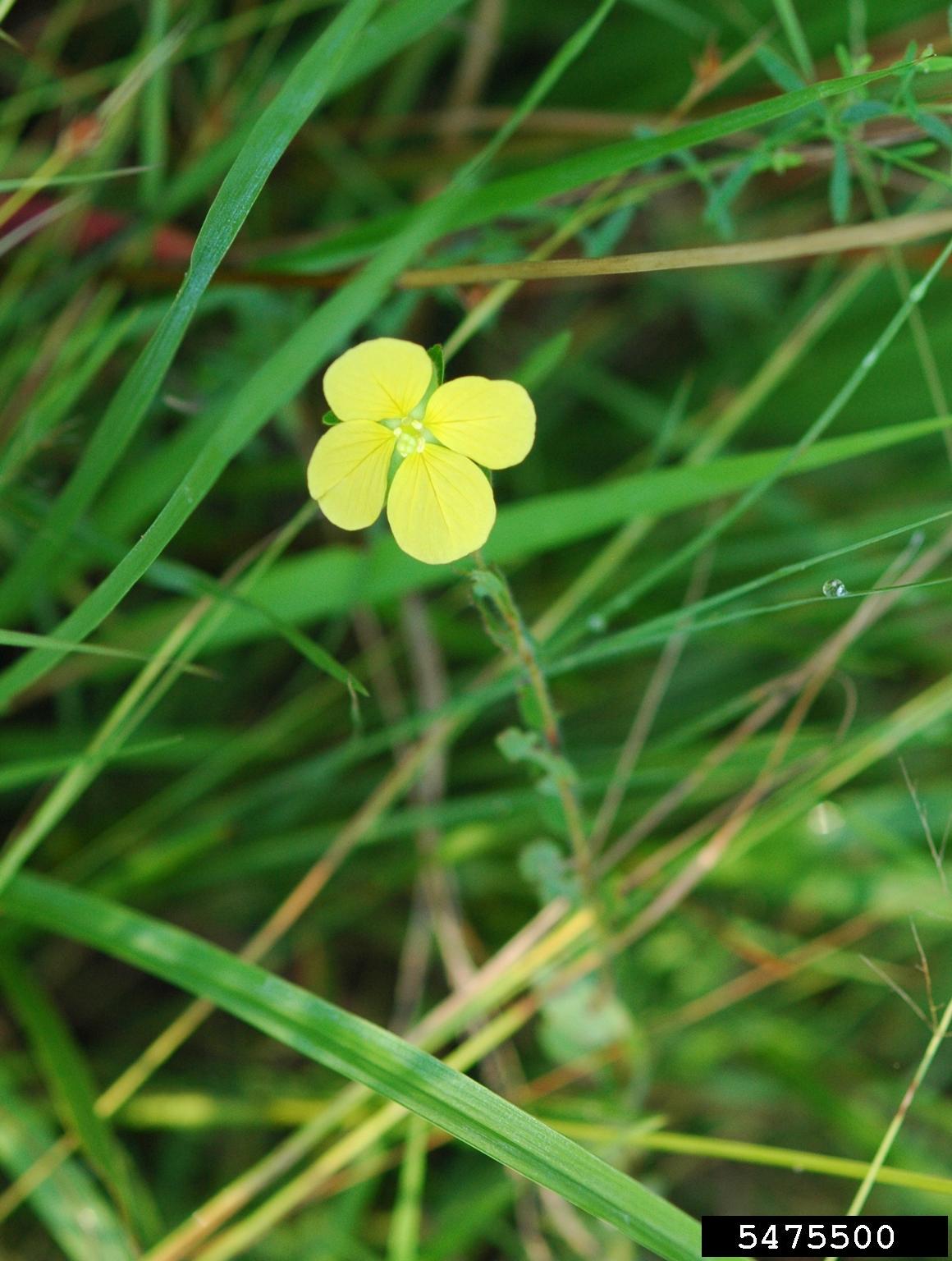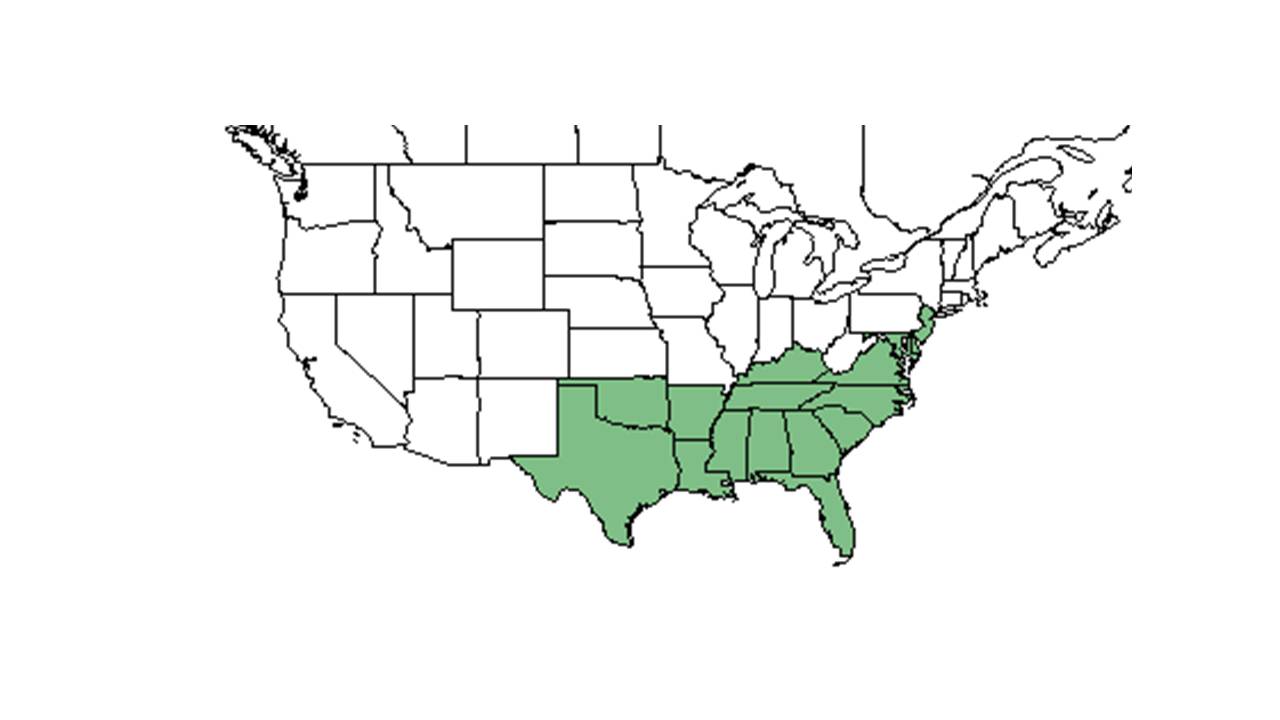Difference between revisions of "Ludwigia hirtella"
(→Distribution) |
|||
| (8 intermediate revisions by 5 users not shown) | |||
| Line 18: | Line 18: | ||
}} | }} | ||
| − | Common name: | + | Common name: spindleroot, Rafinesque's seedbox<ref name=weakley>Weakley, A.S. 2020. Flora of the Southeastern United States. Edition of 20 October 2020. University of North Carolina at Chapel Hill, Chapel Hill, North Carolina.</ref> |
==Taxonomic notes== | ==Taxonomic notes== | ||
| + | Synonyms: none<ref name=weakley/> | ||
| + | |||
| + | Varieties: none<ref name=weakley/> | ||
| + | |||
==Description== | ==Description== | ||
<!-- Basic life history facts such as annual/perrenial, monoecious/dioecious, root morphology, seed type, etc. --> | <!-- Basic life history facts such as annual/perrenial, monoecious/dioecious, root morphology, seed type, etc. --> | ||
| − | “Repent or erect, usually branched, short-lived perennials, or rarely annual. Floral parts in 4-7’s; hypanthium not prolonged beyond ovary. Capsules longitudinally or poricidally multiseriate, rarely uniseriate. Most of the erect species produce basal offshoots, which have ovate to obovate leaves, in the late summer and fall. Bracteoles occur in pairs on the pedicel or stipe or on the base of the hypanthium.” | + | “Repent or erect, usually branched, short-lived perennials, or rarely annual. Floral parts in 4-7’s; hypanthium not prolonged beyond the ovary. Capsules longitudinally or poricidally multiseriate, rarely uniseriate. Most of the erect species produce basal offshoots, which have ovate to obovate leaves, in the late summer and fall. Bracteoles occur in pairs on the pedicel or stipe or on the base of the hypanthium.”<ref name="Radford et al 1964">Radford, Albert E., Harry E. Ahles, and C. Ritchie Bell. Manual of the Vascular Flora of the Carolinas. 1964, 1968. The University of North Carolina Press. 744-7. Print.</ref> |
| − | "Stems erect, strict or branched, densely pubescent, to 1m tall; roots fusiform. Leaves alternate, elliptic to lanceolate, pubescent, to 10 cm long and 2.5 cm wide; sessile. Sepals 4, reflexed, ovate, pubescent, 6.5-9 mm long, 3-4 mm wide; petals 4, 7-15 mm long, 5-12 mm wide; styles 1.5-3 mm long, stylopodium prominent. Capsules cubical, 4-angled, usually narrowly winged, appressed pubescent, 6-10 mm long, 4-5.7 mm broad; bracteoles linear, 2-4 mm long; pedicels to 15 mm long.” <ref name="Radford et al 1964"/> | + | "Stems erect, strict or branched, densely pubescent, to 1m tall; roots fusiform. Leaves alternate, elliptic to lanceolate, pubescent, to 10 cm long and 2.5 cm wide; sessile. Sepals 4, reflexed, ovate, pubescent, 6.5-9 mm long, 3-4 mm wide; petals 4, 7-15 mm long, 5-12 mm wide; styles 1.5-3 mm long, stylopodium prominent. Capsules cubical, 4-angled, usually narrowly winged, appressed pubescent, 6-10 mm long, 4-5.7 mm broad; bracteoles linear, 2-4 mm long; pedicels to 15 mm long.”<ref name="Radford et al 1964"/> |
==Distribution== | ==Distribution== | ||
| + | ''L. hirtella'' ranges from southern New Jersey to the Florida Panhandle, west to eastern Texas, and north to Kentucky, central Tennessee, Arizona, and southeastern Oklahoma.<ref name=weakley/> | ||
| + | |||
==Ecology== | ==Ecology== | ||
===Habitat=== <!--Natural communities, human disturbed habitats, topography, hydrology, soils, light, fire regime requirements for removal of competition, etc.--> | ===Habitat=== <!--Natural communities, human disturbed habitats, topography, hydrology, soils, light, fire regime requirements for removal of competition, etc.--> | ||
| − | + | This species can be found in wet or dry sandy loam of open areas in wiregrass-longleaf pinewoods, low moist depressions, pine-saw palmetto flatwoods, bogs, floodplain woodland clearings and wet thickets.<ref name="FSU Herbarium">Florida State University Robert K. Godfrey Herbarium database. URL: [http://herbarium.bio.fsu.edu http://herbarium.bio.fsu.edu]. Last accessed: June 2014. Collectors: P. Adams, Loran C. Anderson, R. F. Doren, D. L. Fichtner, Robert K. Godfrey, Gary R. Knight, R. Kral, Karen MacClendon, Travis MacClendon, and R. A. Norris. States and Counties: Florida: Bay, Calhoun, Franklin, Gadsden, Jackson, Leon, Liberty, Nassau, Okaloosa, and Walton. Georgia: Calhoun and Thomas. Texas: Hardin.</ref> It has also been observed to occur in human disturbed areas such as along roadsides, edges of pine plantations, ditches, gas pipeline right-of-ways, and power line corridors.<ref name="FSU Herbarium"/> Associated species include '' Ludwigia alternifolia, L. glandulosa, L. linearis, L. pilosa, Pinus palutris, Serenoa repens, Cyrilla, Hypericum, Rhexia, Sabatia, Rhynchospora, Panicum, Macranthera, Bigelowia, Xyris,'' and ''Platanthera ciliaris''.<ref name="FSU Herbarium"/> | |
| − | This species can be found in wet or | ||
| − | |||
===Phenology=== <!--Timing off flowering, fruiting, seed dispersal, and environmental triggers. Cite PanFlora website if appropriate: http://www.gilnelson.com/PanFlora/ --> | ===Phenology=== <!--Timing off flowering, fruiting, seed dispersal, and environmental triggers. Cite PanFlora website if appropriate: http://www.gilnelson.com/PanFlora/ --> | ||
| − | This species | + | This species flowers from July through September.<ref name="FSU Herbarium"/><ref>Nelson, G. [http://www.gilnelson.com/ PanFlora]: Plant data for the eastern United States with emphasis on the Southeastern Coastal Plains, Florida, and the Florida Panhandle. www.gilnelson.com/PanFlora/ Accessed: 19 MAY 2021</ref> |
<!--===Seed dispersal===--> | <!--===Seed dispersal===--> | ||
<!--===Seed bank and germination===--> | <!--===Seed bank and germination===--> | ||
<!--===Fire ecology===--> <!--Fire tolerance, fire dependence, adaptive fire responses--> | <!--===Fire ecology===--> <!--Fire tolerance, fire dependence, adaptive fire responses--> | ||
<!--===Pollination===--> | <!--===Pollination===--> | ||
| − | <!--=== | + | <!--===Herbivory and toxicology===--> |
<!--===Diseases and parasites===--> | <!--===Diseases and parasites===--> | ||
| − | ==Conservation and | + | ==Conservation, cultivation, and restoration== |
| − | == | + | ==Cultural use== |
==Photo Gallery== | ==Photo Gallery== | ||
<gallery widths=180px> | <gallery widths=180px> | ||
Latest revision as of 18:11, 15 June 2023
| Ludwigia hirtella | |
|---|---|

| |
| Photo by Karan A. Rawlins, University of Georgia, Bugwood.org | |
| Scientific classification | |
| Kingdom: | Plantae |
| Division: | Magnoliophyta - Flowering plants |
| Class: | Magnoliopsida – Dicotyledons |
| Order: | Myrtales |
| Family: | Onagraceae |
| Genus: | Ludwigia |
| Species: | L. hirtella |
| Binomial name | |
| Ludwigia hirtella Raf. | |

| |
| Natural range of Ludwigia hirtella from USDA NRCS Plants Database. | |
Common name: spindleroot, Rafinesque's seedbox[1]
Contents
Taxonomic notes
Synonyms: none[1]
Varieties: none[1]
Description
“Repent or erect, usually branched, short-lived perennials, or rarely annual. Floral parts in 4-7’s; hypanthium not prolonged beyond the ovary. Capsules longitudinally or poricidally multiseriate, rarely uniseriate. Most of the erect species produce basal offshoots, which have ovate to obovate leaves, in the late summer and fall. Bracteoles occur in pairs on the pedicel or stipe or on the base of the hypanthium.”[2]
"Stems erect, strict or branched, densely pubescent, to 1m tall; roots fusiform. Leaves alternate, elliptic to lanceolate, pubescent, to 10 cm long and 2.5 cm wide; sessile. Sepals 4, reflexed, ovate, pubescent, 6.5-9 mm long, 3-4 mm wide; petals 4, 7-15 mm long, 5-12 mm wide; styles 1.5-3 mm long, stylopodium prominent. Capsules cubical, 4-angled, usually narrowly winged, appressed pubescent, 6-10 mm long, 4-5.7 mm broad; bracteoles linear, 2-4 mm long; pedicels to 15 mm long.”[2]
Distribution
L. hirtella ranges from southern New Jersey to the Florida Panhandle, west to eastern Texas, and north to Kentucky, central Tennessee, Arizona, and southeastern Oklahoma.[1]
Ecology
Habitat
This species can be found in wet or dry sandy loam of open areas in wiregrass-longleaf pinewoods, low moist depressions, pine-saw palmetto flatwoods, bogs, floodplain woodland clearings and wet thickets.[3] It has also been observed to occur in human disturbed areas such as along roadsides, edges of pine plantations, ditches, gas pipeline right-of-ways, and power line corridors.[3] Associated species include Ludwigia alternifolia, L. glandulosa, L. linearis, L. pilosa, Pinus palutris, Serenoa repens, Cyrilla, Hypericum, Rhexia, Sabatia, Rhynchospora, Panicum, Macranthera, Bigelowia, Xyris, and Platanthera ciliaris.[3]
Phenology
This species flowers from July through September.[3][4]
Conservation, cultivation, and restoration
Cultural use
Photo Gallery
References and notes
- ↑ 1.0 1.1 1.2 1.3 Weakley, A.S. 2020. Flora of the Southeastern United States. Edition of 20 October 2020. University of North Carolina at Chapel Hill, Chapel Hill, North Carolina.
- ↑ 2.0 2.1 Radford, Albert E., Harry E. Ahles, and C. Ritchie Bell. Manual of the Vascular Flora of the Carolinas. 1964, 1968. The University of North Carolina Press. 744-7. Print.
- ↑ 3.0 3.1 3.2 3.3 Florida State University Robert K. Godfrey Herbarium database. URL: http://herbarium.bio.fsu.edu. Last accessed: June 2014. Collectors: P. Adams, Loran C. Anderson, R. F. Doren, D. L. Fichtner, Robert K. Godfrey, Gary R. Knight, R. Kral, Karen MacClendon, Travis MacClendon, and R. A. Norris. States and Counties: Florida: Bay, Calhoun, Franklin, Gadsden, Jackson, Leon, Liberty, Nassau, Okaloosa, and Walton. Georgia: Calhoun and Thomas. Texas: Hardin.
- ↑ Nelson, G. PanFlora: Plant data for the eastern United States with emphasis on the Southeastern Coastal Plains, Florida, and the Florida Panhandle. www.gilnelson.com/PanFlora/ Accessed: 19 MAY 2021